Ever had a situation where you sent your carefully selected hard work (AKA your portfolio) to a prospective client or employer, and they saw a garbled view of your portfolio file? Or instead, you had to resort to sharing a folder with multiple files that were just so cumbersome that no one saw it?
That's where a PDF portfolio — a single PDF file that comprises multiple files, images, and more — can be useful. That said, what do you do when you have non-PDF format files to contend with? And are PDF portfolios the way forward, or are better solutions available today?
Read on to learn what makes a PDF portfolio tick while exploring better options for exhibiting PDF files.
• What is a PDF portfolio? Who uses PDF portfolios anymore? Doesn't everyone have digital portfolios or personal website? Why do we care about this?
• Turns out, a lot of people. Despite its somewhat simpler nature, PDF files are extremely reliable for exchanging data. They don't scramble on different devices, unlike .doc or .pages files. And, honestly, they can carry essential information. Unless you are in a strictly visual industry, a PDF file is considered more than acceptable.
• So, if you are considering making a PDF portfolio, you should probably do it. And we're here to help a bit.
• There are a few steps to creating a PDF portfolio, but it all depends on what tool you're using for the job. Here, we've used Authory, a tool that does most of the work for you.
• Here's how it works -- you upload all your PDF files to Authory, place them in Collections (think of them as categories for your work), and Authory will create a professional-grade portfolio in minutes, You can enter your bio, contact info, links to your original publications and infinitely more.
• So, there's a step-by-step tutorial you can try out by using Authory's free 14-day trial. Did I mention the trial is free?
• Of course, a tool isn't all it takes. We need some inspiration to create a PDF portfolio that really competes in the market. What is the industry standard? We've got some examples for you.
• Have a look at five PDF portfolios run by professional veterans. you can visit each of these portfolios and explore them yourself.
What is a PDF portfolio?
Why PDFs in the first place?
PDF stands for Portable Document Format, was developed by Adobe in 1992 and became a ubiquitous standardized format used by office workers to send files to each other without losing formatting and additional information.
Before the PDF, if you sent carefully formatted Word documents on PC and Macs to colleagues, clients, or employers working on other machines, there was information loss because the recipient's device needed the same tools to read the file in the same format.
For example, if I sent a friend an MS Word document using the Times New Roman font, and they didn't have that font installed on their computer, they would see a different view from what I had intended.
That's why PDFs became so helpful — it didn't matter what file types I sent — since "each PDF file encapsulates a complete description of a fixed-layout flat document."
What a PDF portfolio is
Soon enough, résumés and portfolios were being sent as PDFs so that the prospective client or employer would see exactly what we wanted them to see.
A PDF portfolio file would contain all the work you've put into your portfolio but compressed, combined, and coalesced into one PDF file for easy perusal.
How a PDF portfolio differs from a regular portfolio
What a "regular" portfolio is, is defined by the time period.
In times past, portfolios were massive real-life documents that were meticulously put together by creatives looking to impress potential clients or employers. You literally had to drag files from one hiring office to another.
Then computers came to life, and all the files in your heavy portfolio could become digital files. Instead of printing multiple files, you were clicking on "Add folder" and "New folder" to put together your one portfolio.
With the advent of the PDF and the Adobe Acrobat file reader, PDF portfolios became the norm. So, for a time, a PDF portfolio was the regular portfolio.
But today, regular portfolios are, in all likelihood, a simple URL to a webpage. And this is because, when applying for a job or project, you'll want to ensure that your client or employer can view your portfolio on the mobile.
So, in a sense, PDF portfolios are a tad passé. But they still have their uses!
How is a PDF portfolio useful today?
A PDF document can contain information that's sometimes hard to display on a webpage. Take a look at this full-fledged brochure made by Urvashi and her team, which has a ton of pages and graphics: https://authory.com/UrvashiAneja/AI-on-the-ground-A-snapshot-of-AI-use-in-India-a489ef3990ae541e4a1ee1bb5c0eab375

So, as you can see, a PDF portfolio still has its uses but can now work in conjunction with a regular online portfolio. In the next couple of sections, we show you how to create PDF portfolio(s) such as these, plus we take you through some beautiful examples of PDFs in portfolios and PDF portfolios themselves.
How to create a PDF portfolio
We're going to use Authory to create the perfect PDF portfolio. No, it's not another native application but a browser-based tool.
Step 1: Import and add your PDF content
When you sign up, you can add files as URLs, as shown below.
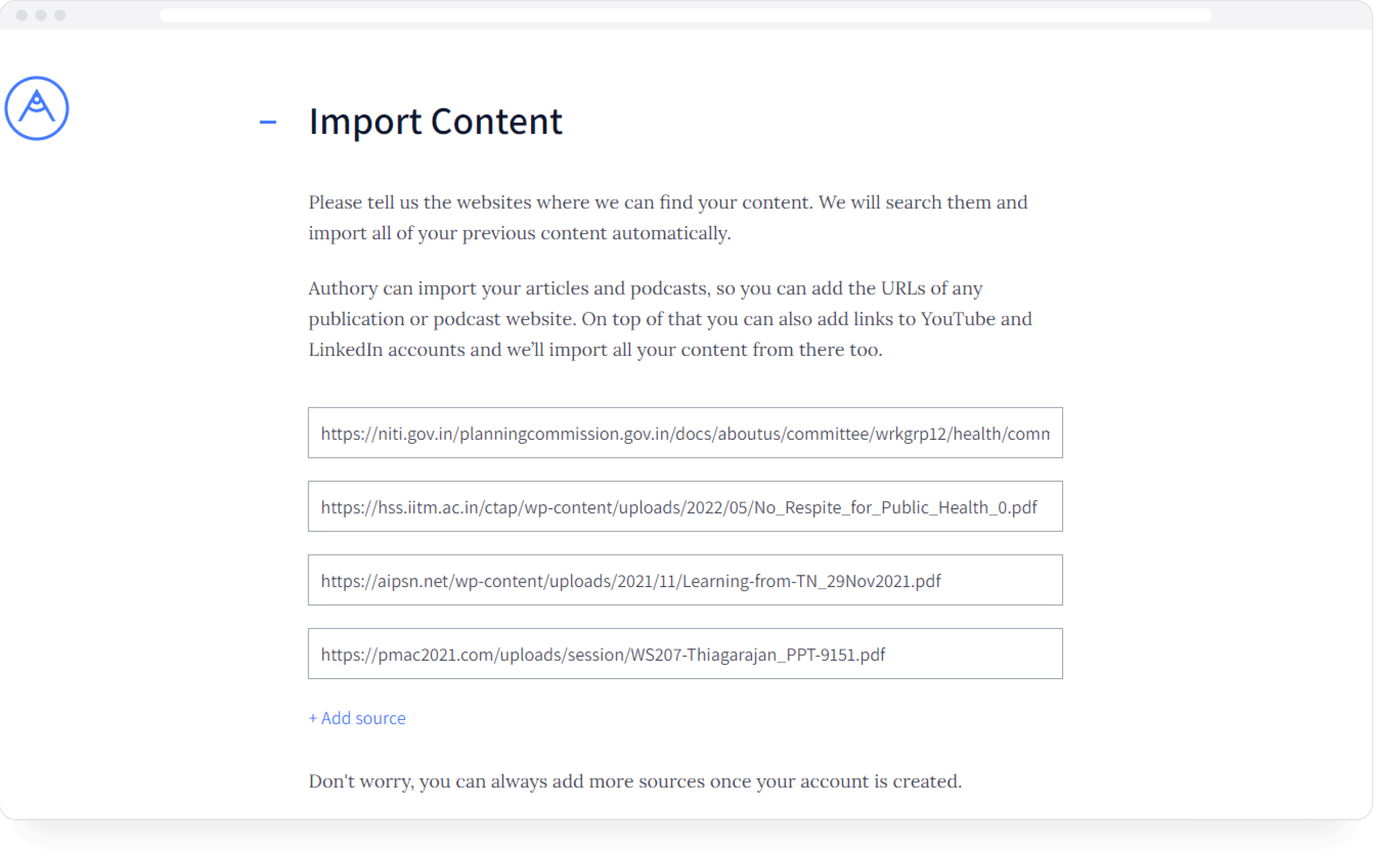
Alternatively, you can add files individually by uploading them to Authory. Navigate to the "Content" tab in your Authory account, click the "+ Add Content" button at the bottom left, and upload a PDF file, as seen below.
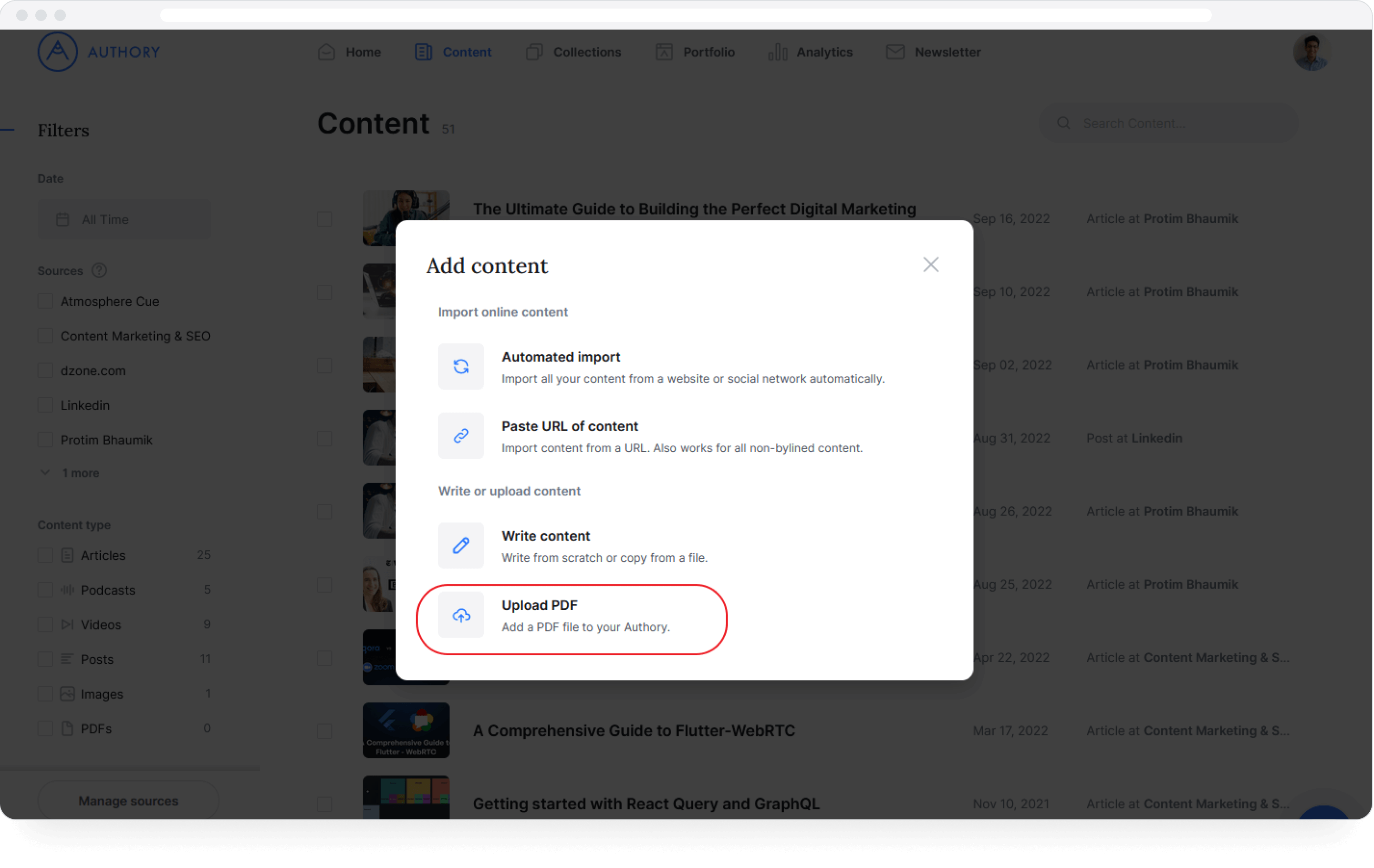
You can then edit the title & description, create a new source, or add the file to an existing source. For the purposes of this example, we've named the source "SingylStroke PDFs."
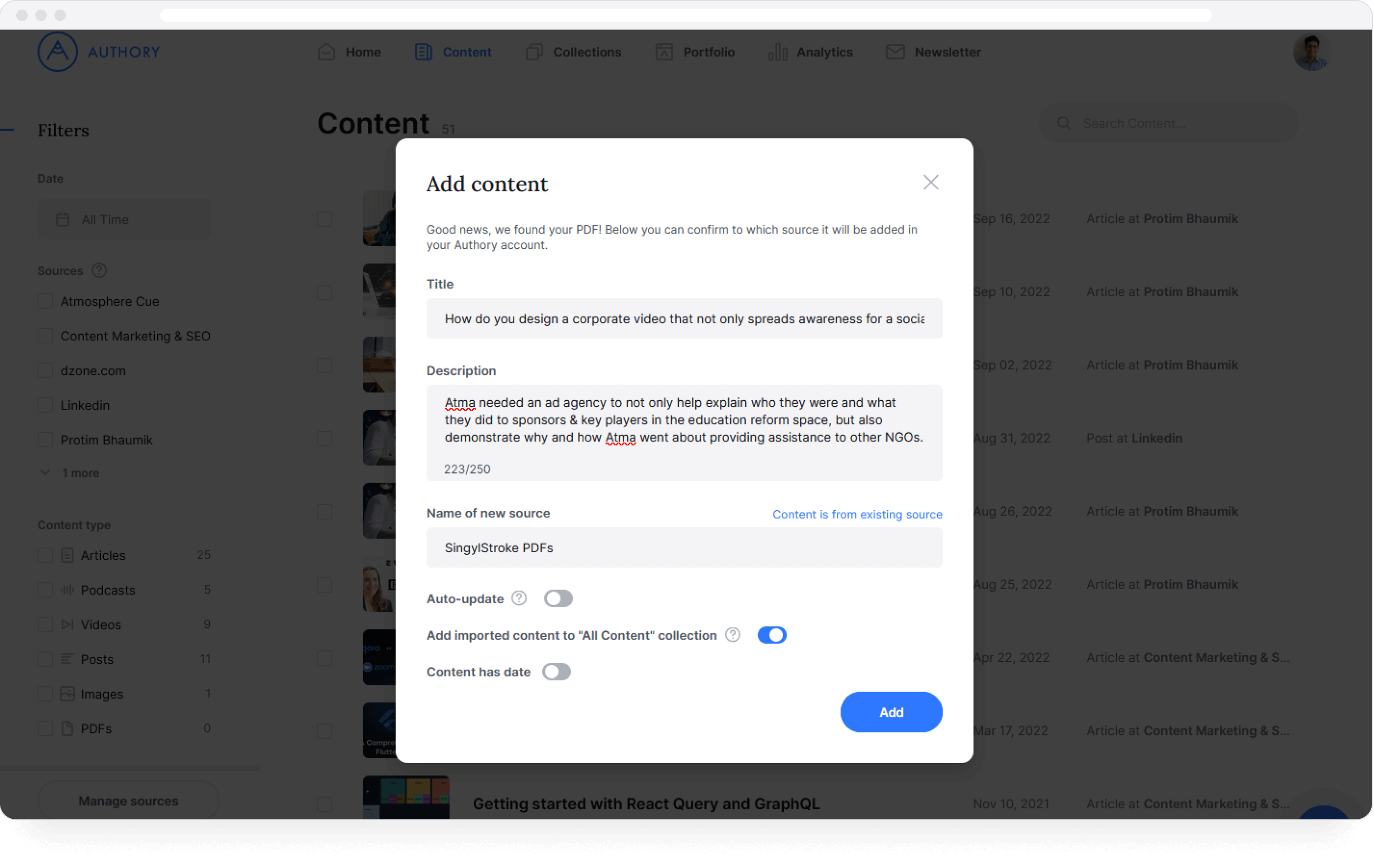
Next, you can add more PDF files like so:
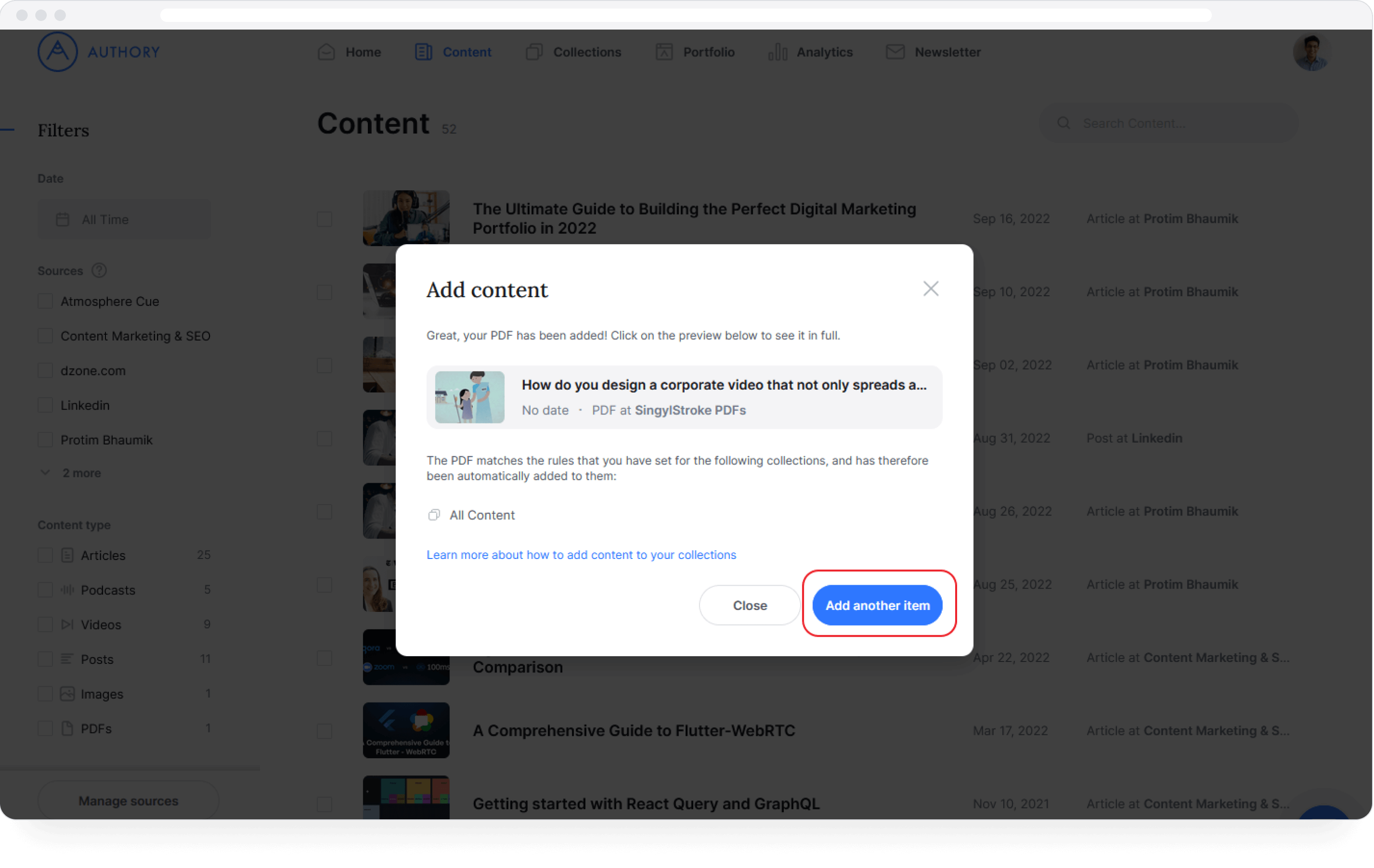
Step 2: Create a PDF portfolio collection
Now, navigate to the "Content" tab, and select the "PDFs" content file type at the bottom left. Once the PDFs are selected, use the "+ Create automated collection" button on the top right to create a PDF portfolio collection.
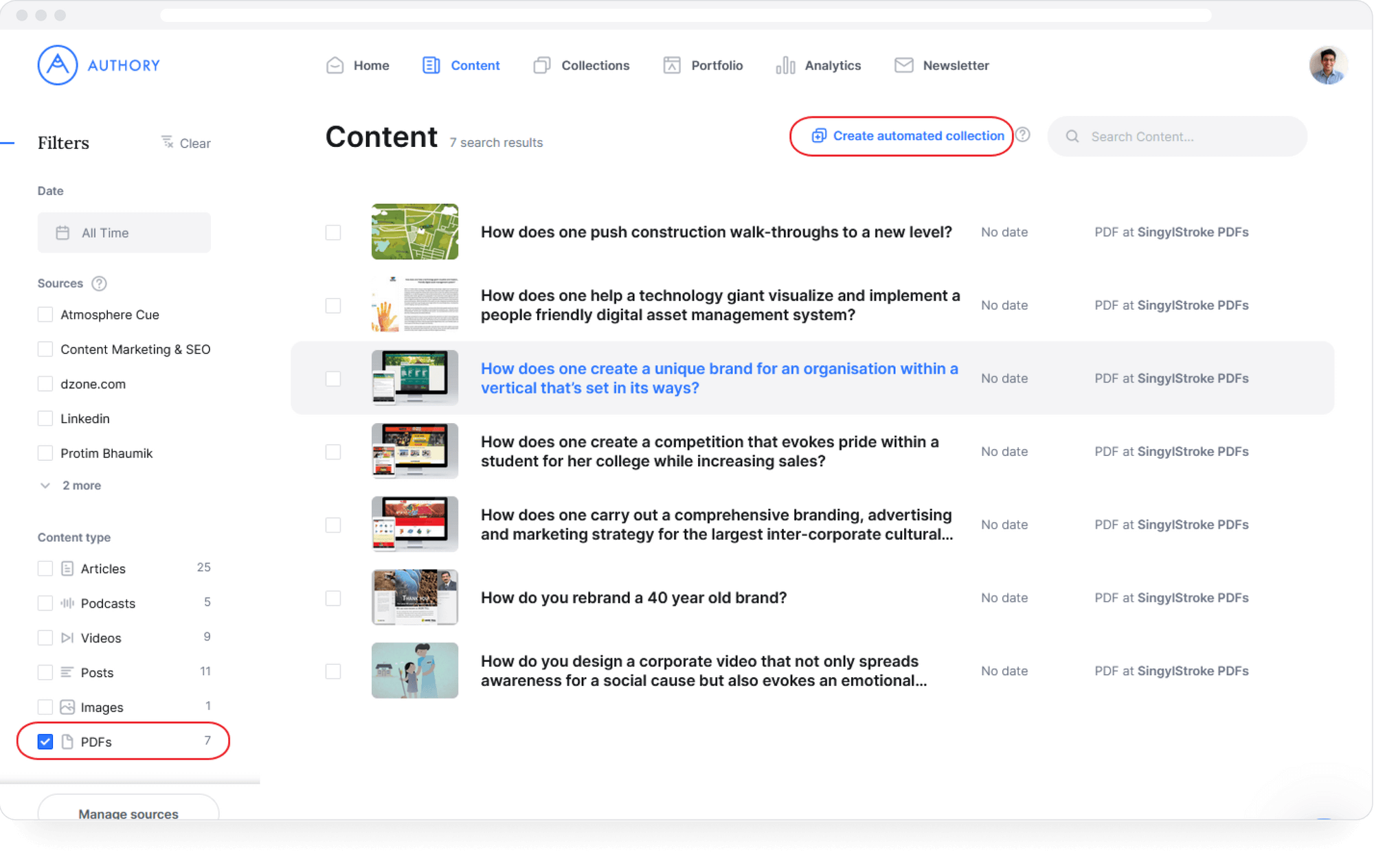
You can now name your collection and add a description.
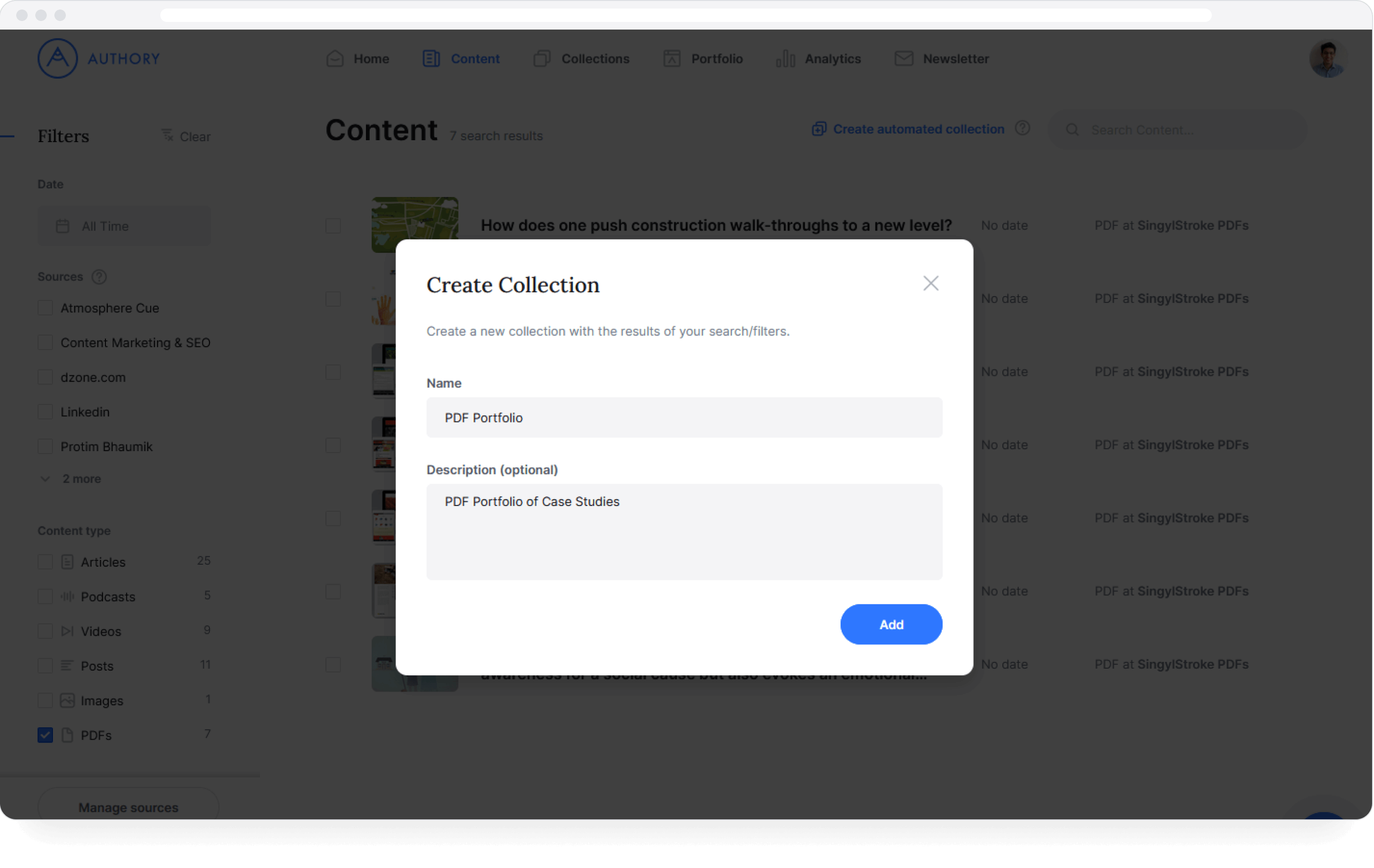
After uploading all the PDFs to this collection, go to the "Collections" tab to see how it looks.
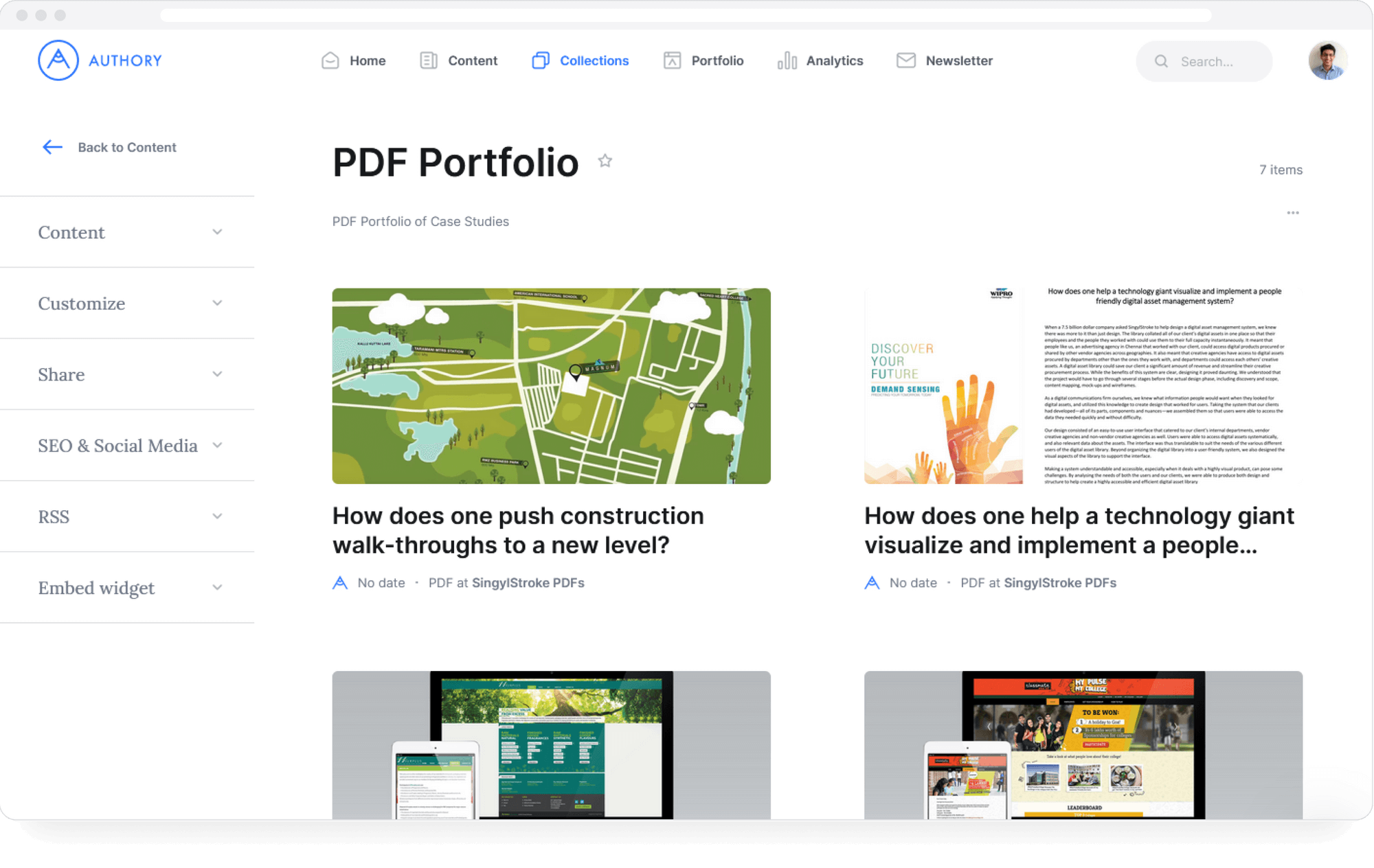
Step 3: Connect the collection to your portfolio & display it
Next, click on the "Portfolio" tab and go to the "Content" tab on the left. From there, you can add your "PDF Portfolio" collection to the portfolio.
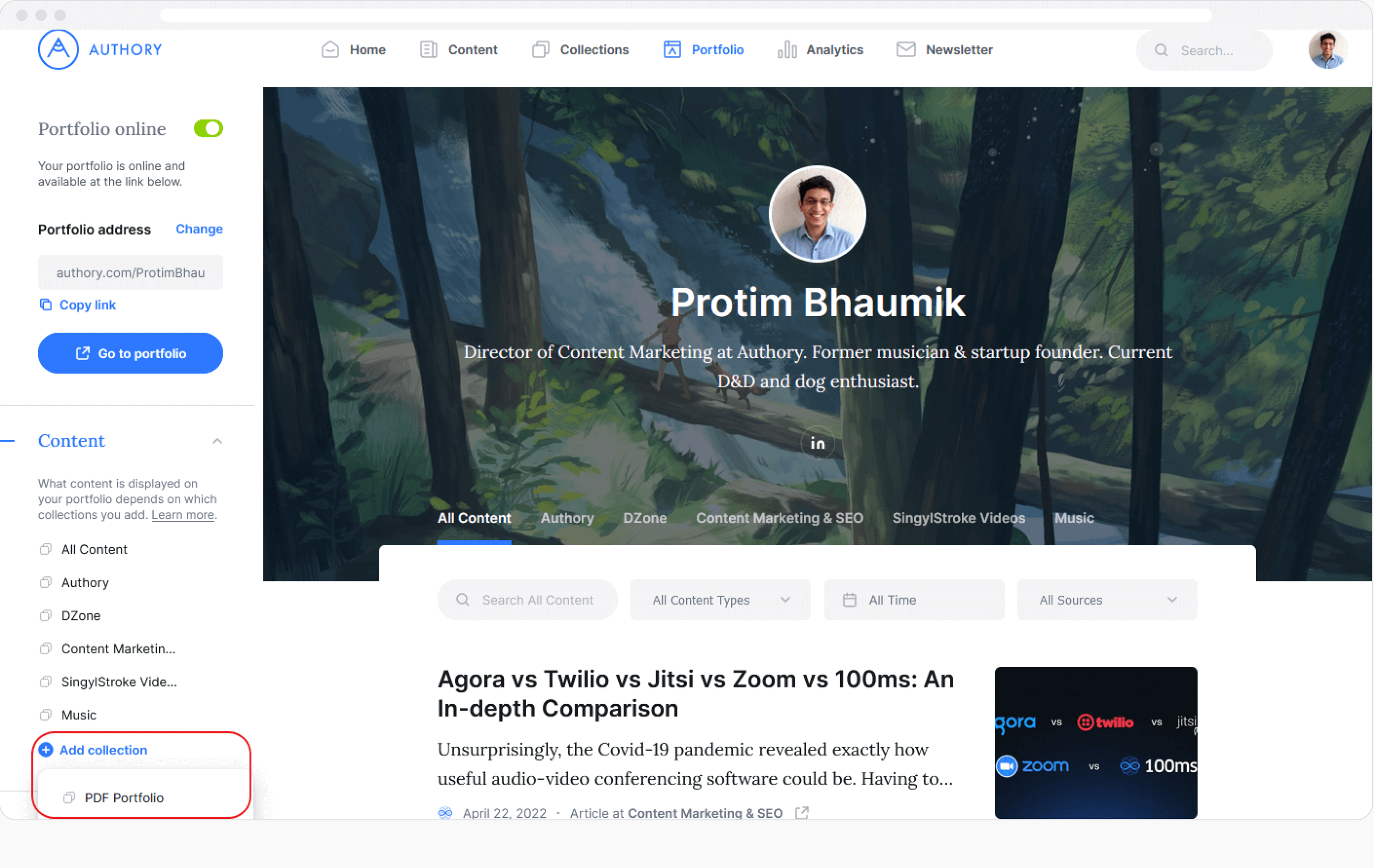
And this is how it will finally look on your portfolio.
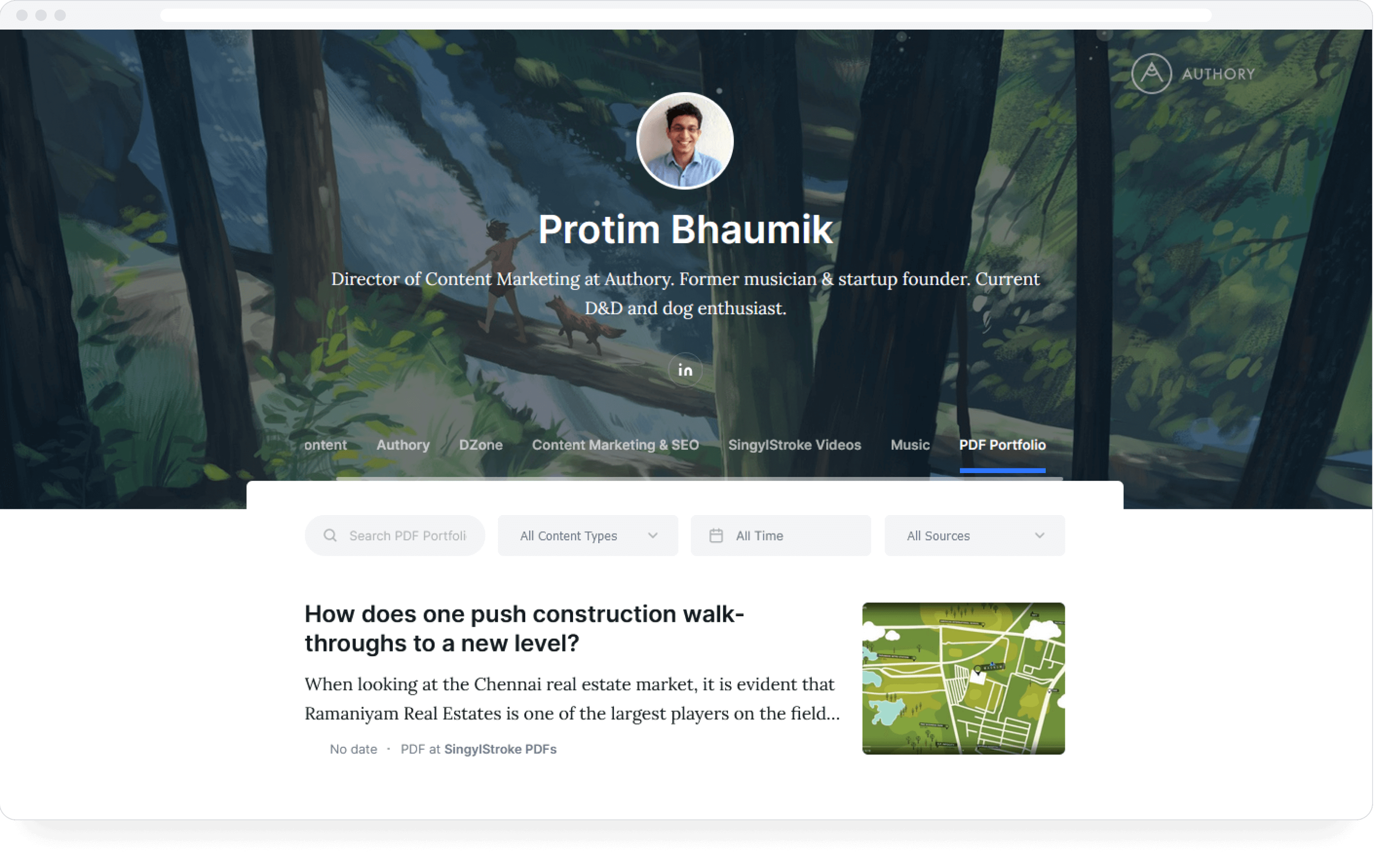
Bonus: You can have various collections in Authory, as shown in the example above. This flexibility allows you to have different content types sorted by topic, file type, publication, and more.
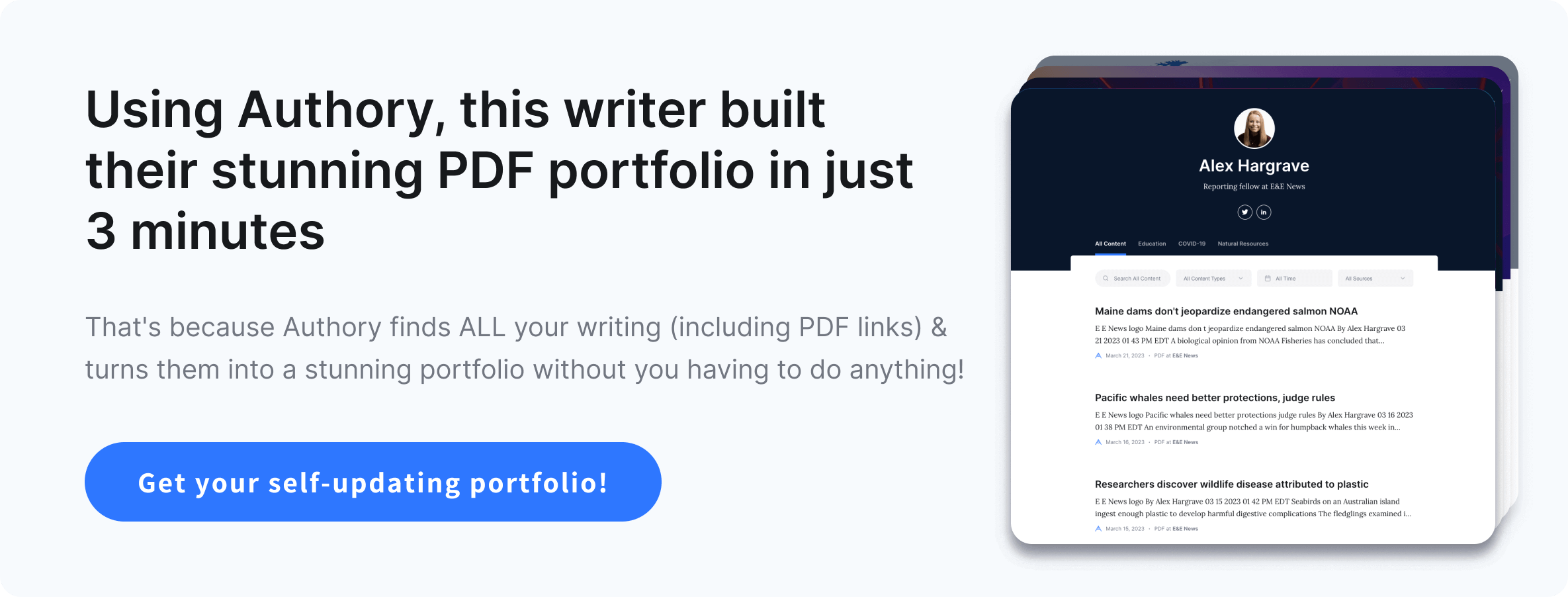
5 excellent examples of PDF portfolios
Here's a curated selection of fantastic PDF portfolios!
PDF portfolio example 1 — Urvashi Aneja
Urvashi Aneja is a social science researcher and policy analyst studying the social impacts of data-driven decision-making systems in India and the global south. Her current work examines the ethics and social impacts of artificial intelligence, big tech and platform governance, and labor well-being in digital gig economies.

You can also find the rest of her portfolio here: authory.com/UrvashiAneja
PDF portfolio example 2 — Gabriel Swain
Gabriel Swain is a marketing leader with 12+ years of content and growth marketing leadership experience and has been writing professionally for 15+ years. He works at the intersection of social and environmental justice and sustainable economic growth.
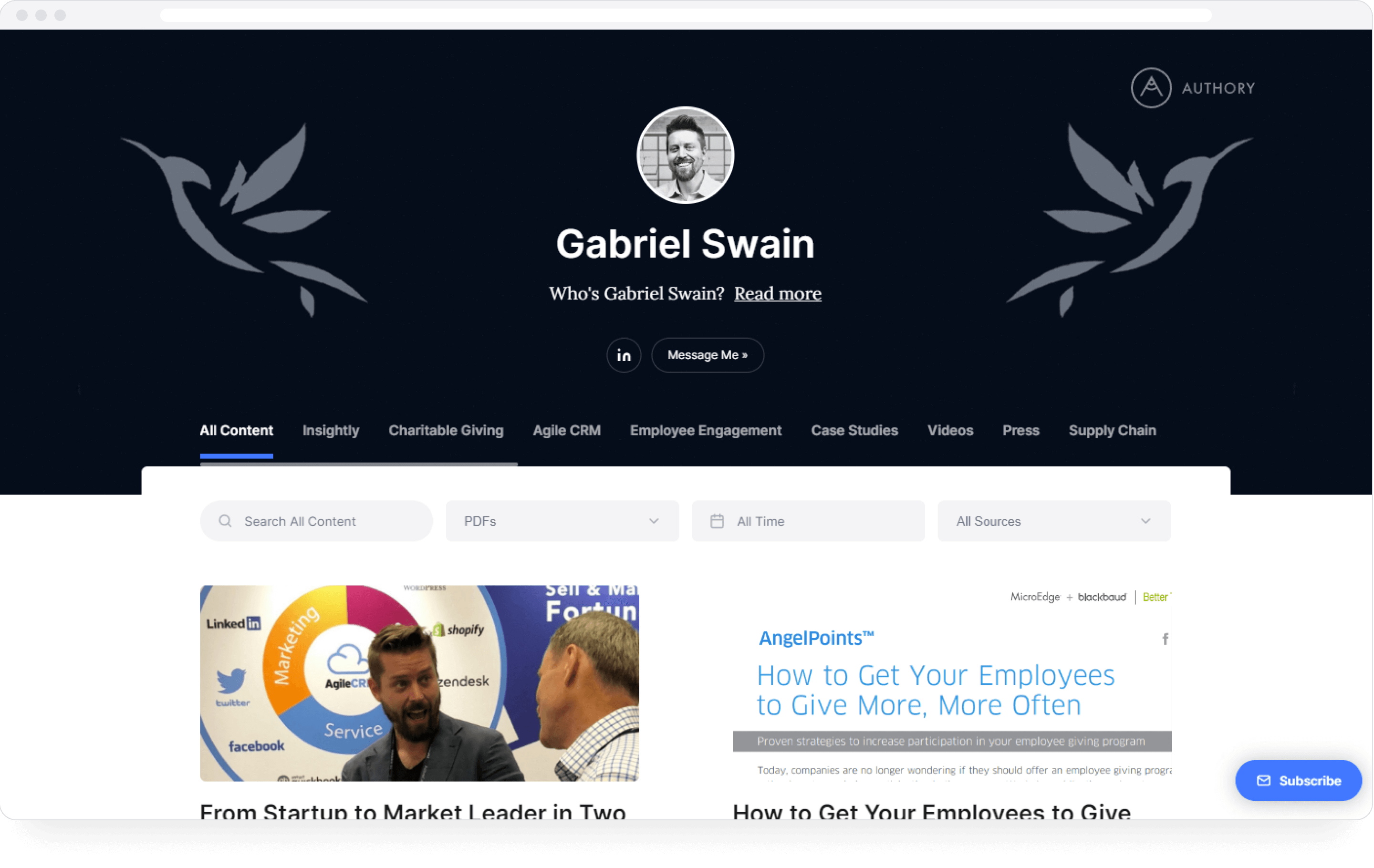
His entire portfolio can be found here: authory.com/GabrielSwain
PDF portfolio example 3 — Carter Hammett
Carter Hammett is a social worker, writer, and trainer. He's the current Auto and Trucking Atlantic magazine editor while contributing to Convenience and Carwash Canada, CareerWise, Canadian Immigrant Magazine, and other publications. He's the author of three books, including Book of Disquiet: Dispatches From the Frontlines.

Check out his entire portfolio here: authory.com/CarterHammett
PDF portfolio example 4 — Annam Suresh
Annam Suresh is an award-winning journalist from India. She has won over 14 National and International awards, including MacDowell Colony Fellowship, a finalist for The Lorenzo Natali Prize, Chameli Devi Jain Award, Calderwood Non-fiction Grant, Laadli Regional and National Award for Gender Sensitivity, Brief Media Award, Hunger Foundation Prize, NFI Media Fellowship and The Statesman Rural Reporting Award (twice), and a finalist for the Osborne Elliot International Prize among others.
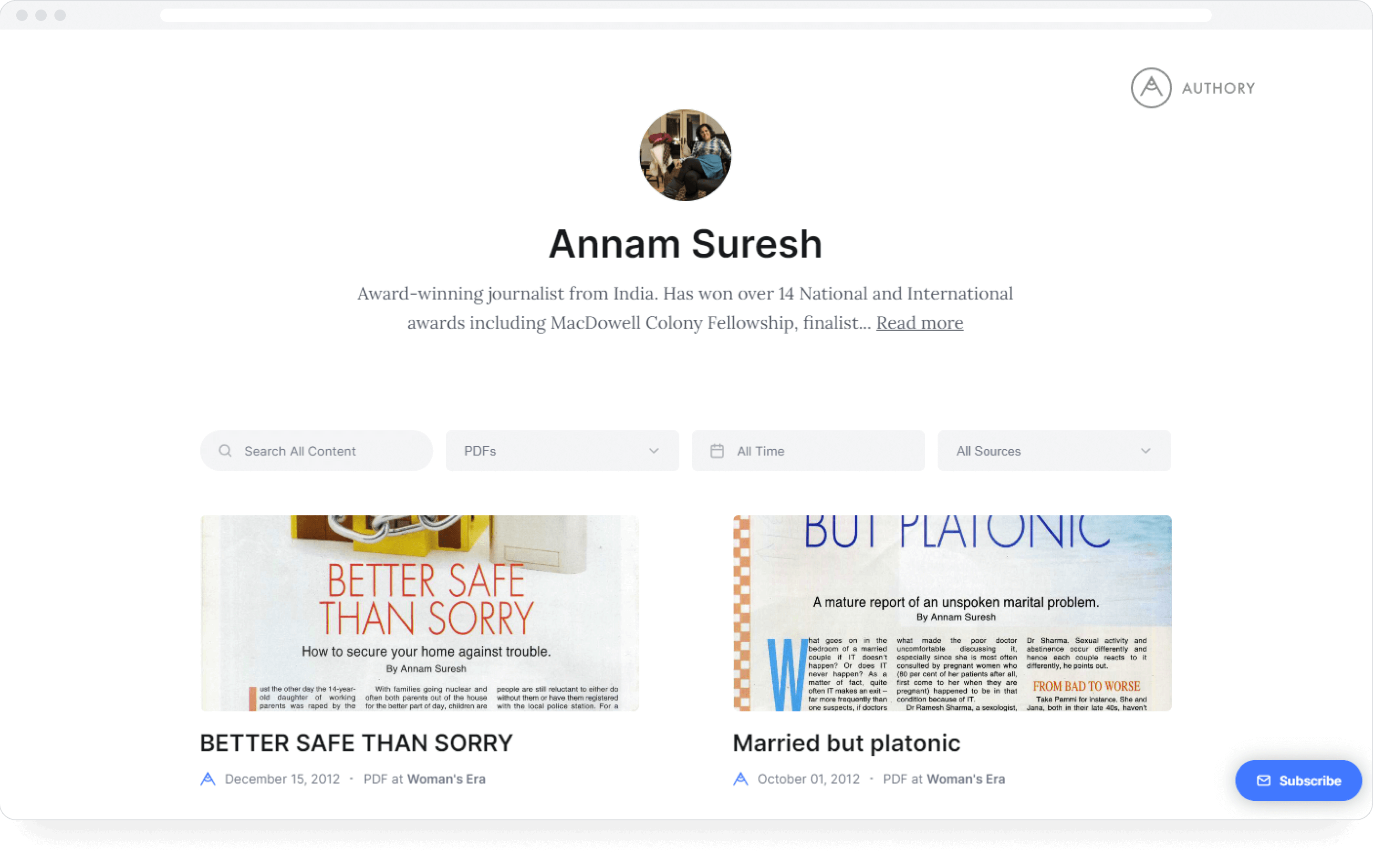
To read more of her work, see her full portfolio: authory.com/AnnamSuresh
PDF portfolio example 5 — Susan Horsburgh
Susan Horsburgh is a journalist and writer with more than 25 years of experience writing news, features, and cover stories for leading international and Australian publications, including TIME, People, The Weekend Australian Magazine, The Australian Women's Weekly, Good Weekend, The Age (Melbourne) Magazine, The Australian Financial Review Magazine, and The Australian newspaper.
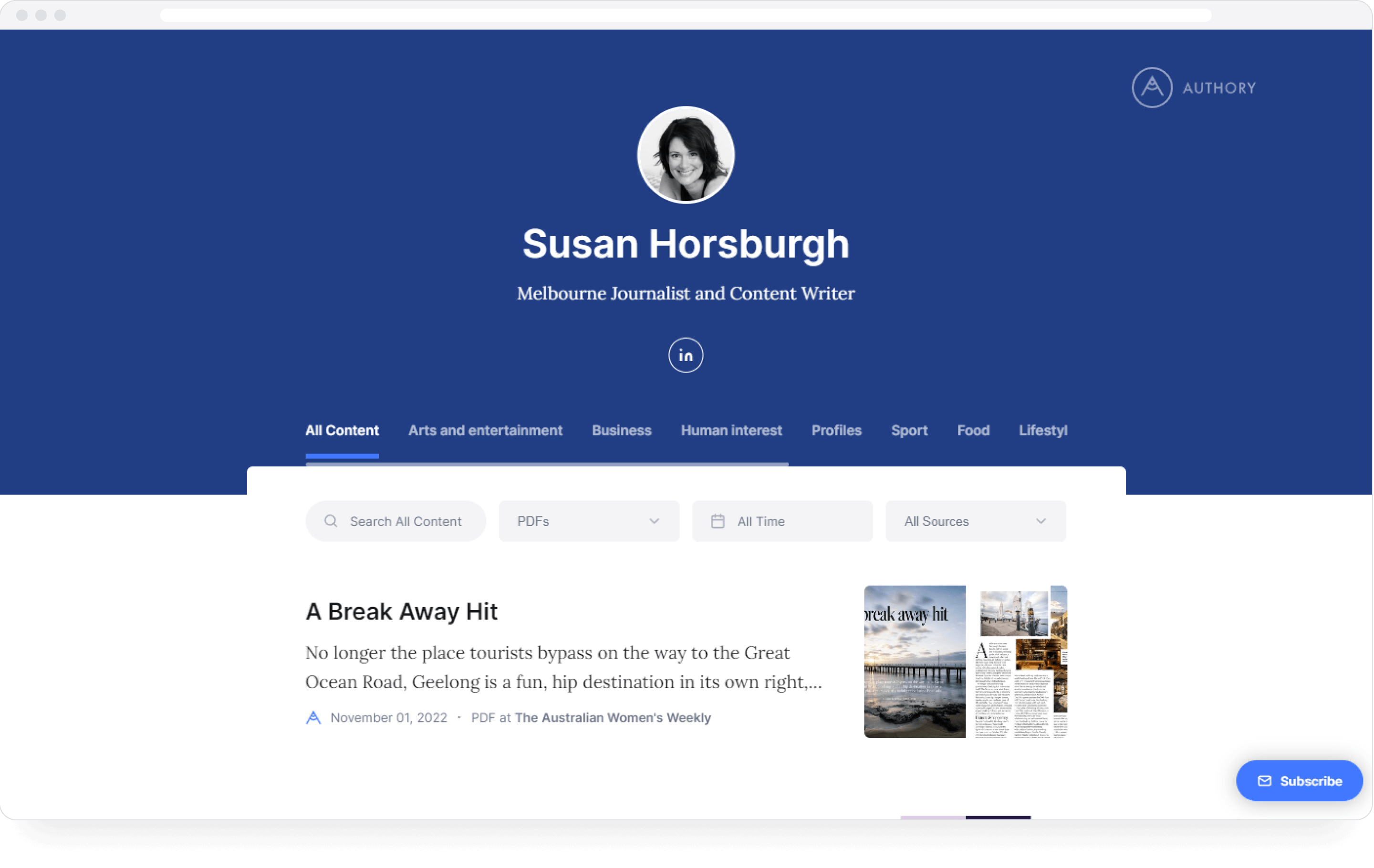
And you can check out the rest of her portfolio here: authory.com/SusanHorsburgh
For more PDF portfolio examples, read this article!
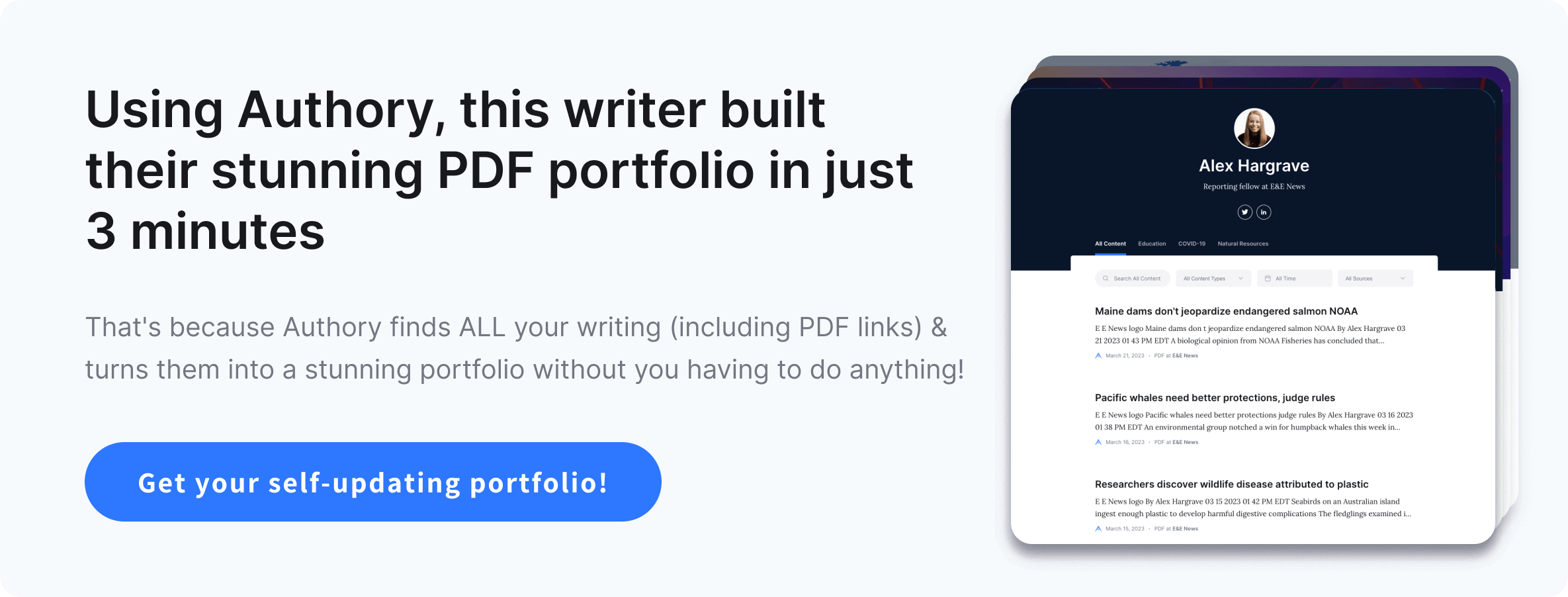
Authory — self-updating portfolio & backup
An issue most content creators face is keeping their portfolios updated, whether they're for PDFs or other formats. Also, websites go down, CMS switches get botched, and, in essence, no content can be trusted to remain online forever.
That's where a solution like Authory, a self-updating portfolio tool that also works as a backup for all your content (both past and future), needs to be a part of your toolkit.
As shown above, all you need to do is add your sources, and Authory will go and find ALL your bylined content and import it into your account. Other files, such as ghostwritten pieces, can be uploaded manually. Moreover, any new content published on these websites will automatically be added to your portfolio.






